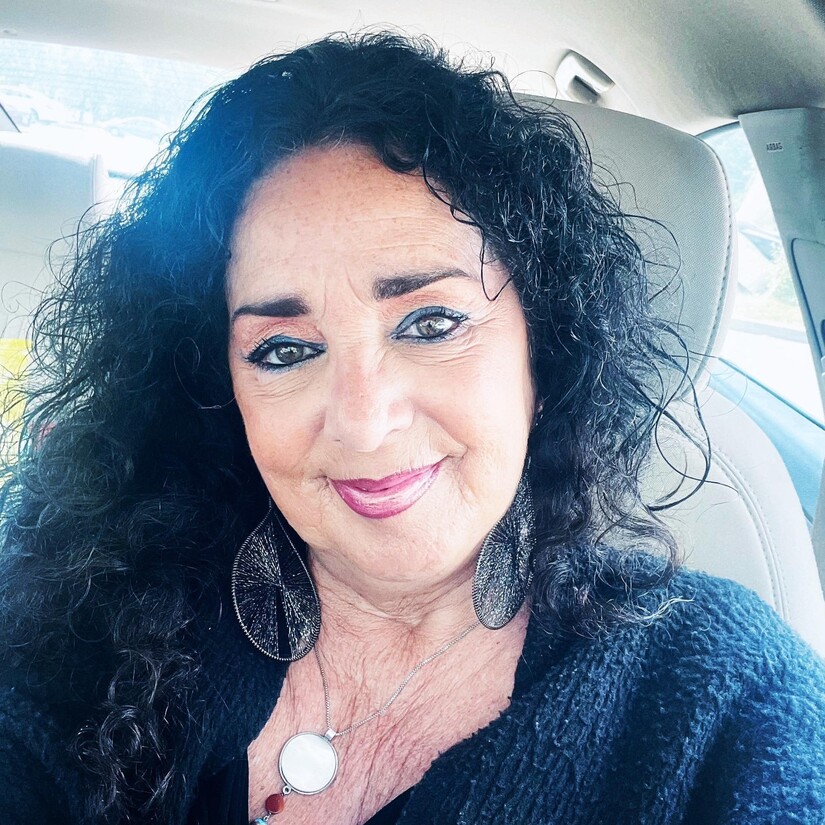Image
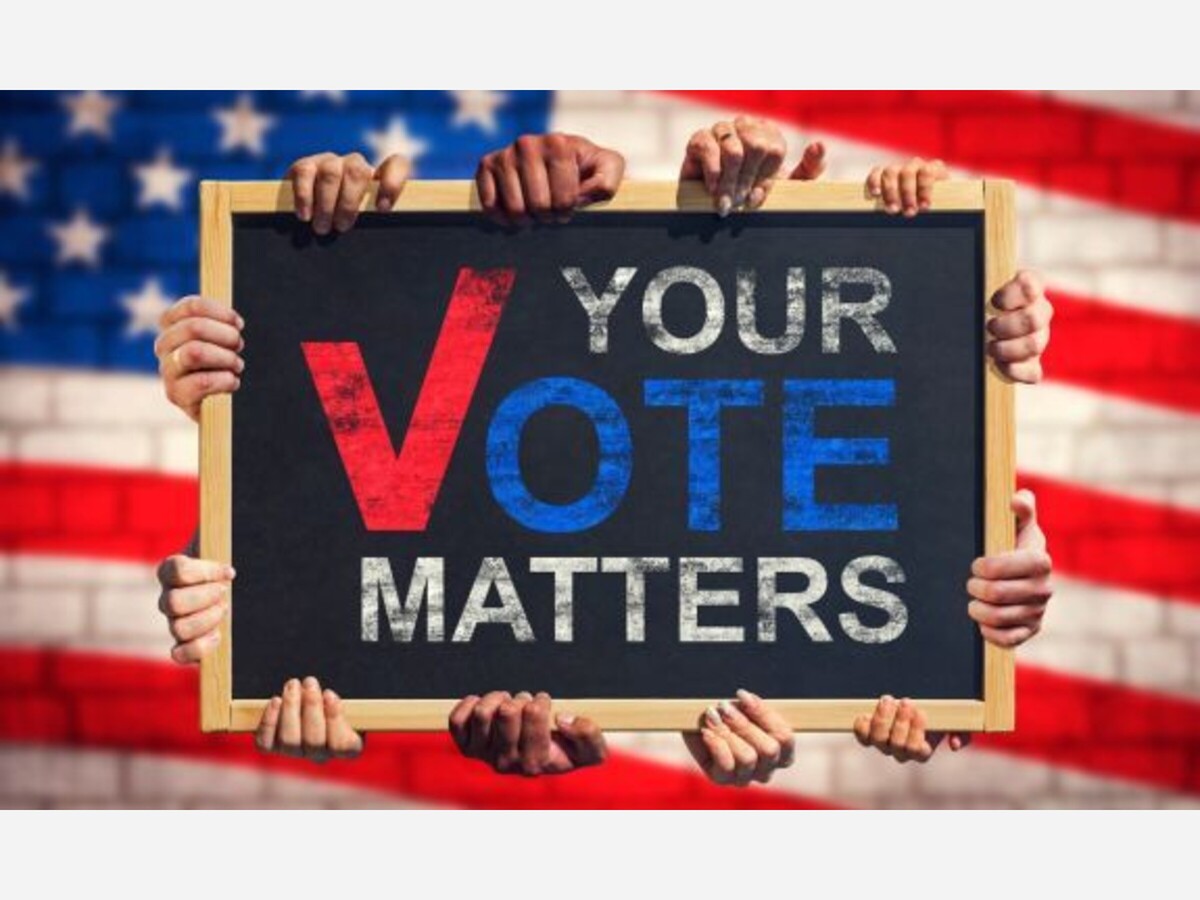
SKYLARK'S ARTICLE OF THE WEEK - YOUR VOTE MATTERS
Your vote matters as it always has. Just because we're in our 60's doesn't mean we should become complacent about voting. We have value and worth at this age. We have wisdom and experience. We matter. So please take some time to vote.
Here's some history on voting from Carnegie.org.
The struggle for equal voting rights dates to the earliest days of U.S. history. Challenges to voting rights in this country are hardly a 21st-century invention. Entrenched groups have long tried to keep the vote out of the hands of the less powerful. Indeed, America began its great democratic experiment in the late 1700s by granting the right to vote to a narrow subset of society — white male landowners. Even as barriers to voting began receding in the ensuing decades, many Southern states erected new ones, such as poll taxes and literacy tests, aimed at keeping the vote out of the hands of African American men.
Over time, voting rights became a bipartisan priority as people worked at all levels to enact constitutional amendments and laws expanding access to the vote based on race and ethnicity, gender, disability, age and other factors. The landmark Voting Rights Act of 1965 passed by Congress took major steps to curtail voter suppression. Thus began a new era of push-and-pull on voting rights, with the voting age reduced to 18 from 21 and the enshrinement of voting protections for language minorities and people with disabilities.
Greater voter enfranchisement was met with fresh resistance and in 2013, the Supreme Court gutted the Voting Rights Act in its ruling on Shelby County v. Holder, paving the way for states and jurisdictions with a history of voter suppression to enact restrictive voter identification laws. A whopping 23 states created new obstacles to voting in the decade leading up to the 2018 elections, according to the nonpartisan coalition Election Protection.
These activities have a demonstrable and disproportionate effect on populations that are already underrepresented at the polls. Adding to the problems, government at all levels has largely failed to make the necessary investments in elections (from technology to poll-worker training) to ensure the integrity and efficiency of the system.
1700s: Voting generally limited to white property holders

Despite their belief in the virtues of democracy, the founders of the United States accepted and endorsed severe limits on voting. The U.S. Constitution originally left it to states to determine who is qualified to vote in elections. For decades, state legislatures generally restricted voting to white males who owned property. Some states also employed religious tests to ensure that only Christian men could vote.
1800s: Official barriers to voting start to recede
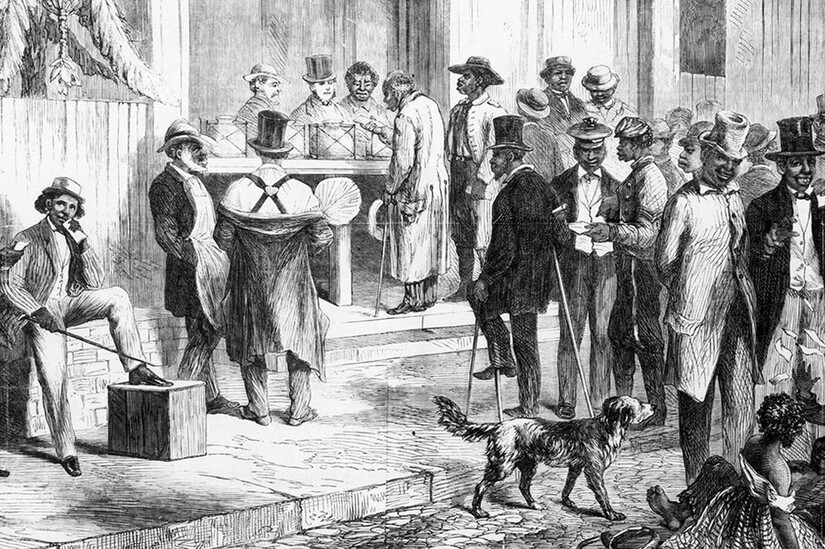
During the early part of the 19th century, state legislatures begin to limit the property requirement for voting. Later, during the Reconstruction period following the Civil War, Congress passed the Fifteenth Amendment to the Constitution, which ensured that people could not be denied the right to vote because of their race. The amendment was ratified by the states in 1870. However, in the decades that followed, many states, particularly in the South, used a range of barriers, such as poll taxes and literacy tests, to deliberately reduce voting among African American men.
1920: Women win the vote
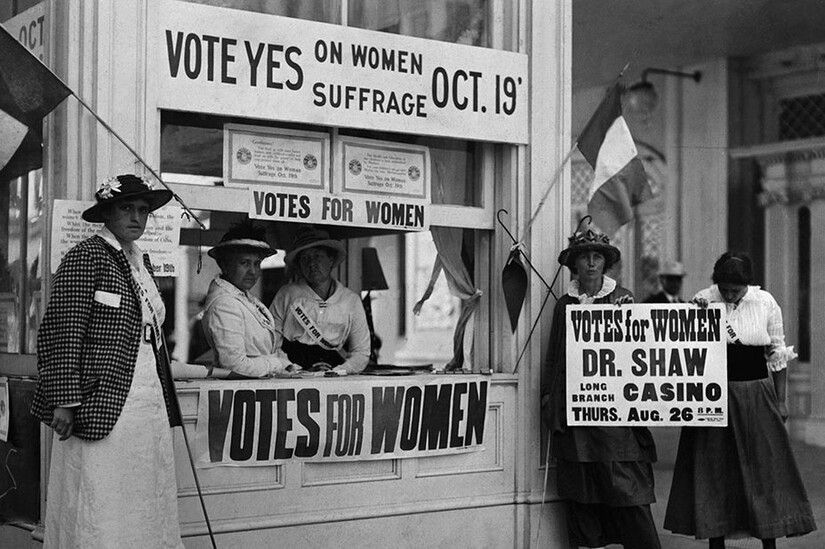
Early in the 20th century, women still were only able to vote in a handful of states. After decades of organizing and activism, women nationwide won the right to vote with the ratification of the 19th amendment to the U.S. Constitution in 1920.
1960: Southern states ramp up barriers to voting
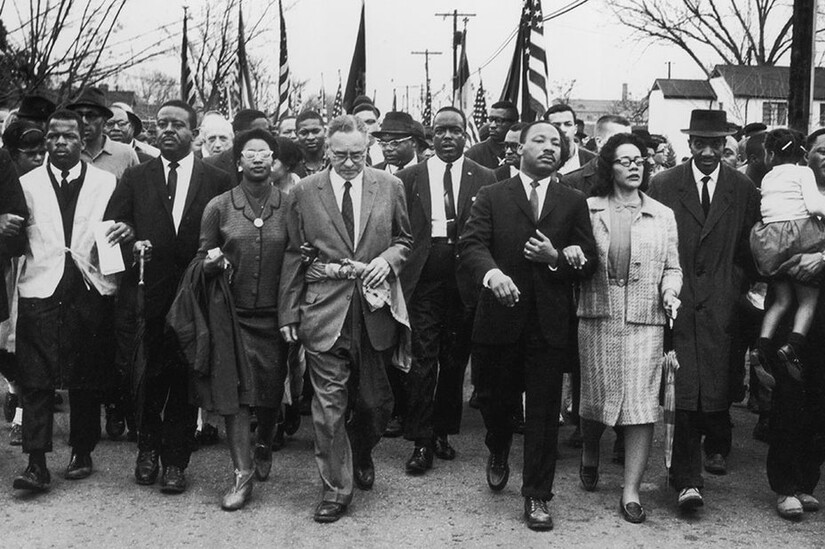
The struggle for equal voting rights came to a head in the 1960s as many states, particularly in the South, dug in on policies—such as literacy tests, poll taxes, English-language requirements, and more—aimed at suppressing the vote among people of color, immigrants and low-income populations. In March 1965, activists organized protest marches from Selma, Alabama, to the state capital of Montgomery to spotlight the issue of black voting rights. The first march was brutally attacked by police and others on a day that came to be known as “Bloody Sunday.” After a second march was cut short, a throng of thousands finally made the journey, arriving in Montgomery on March 24 and drawing nationwide attention to the issue.
1964: The 24th amendment targets poll taxes

Poll taxes were a particularly egregious form of voter suppression for a century following the Civil War, forcing people to pay money in order to vote. Payment of the tax was a prerequisite for voter registration in many states. The taxes were expressly designed to keep African Americans and low-income white people from voting. Some states even enacted grandfather clauses to allow many higher-income white people to avoid paying the tax. The 24th amendment was approved by Congress in 1962 and ratified by the states two years later. In a 1966 case, the Supreme Court ruled that poll taxes are unconstitutional in any U.S. election.
1965: The Voting Rights Act passes Congress

Inspired by voting rights marches in Alabama in spring 1965, Congress passed the Voting Rights Act. The vote was decisive and bipartisan: 79-18 in the Senate and 328-74 in the House. President Lyndon Johnson signed the measure on August 6 with Dr. Martin Luther King, Jr., Rosa Parks, and other icons of the civil rights movement at his side. In addition to barring many of the policies and practices that states had been using to limit voting among African Americans and other targeted groups, the Voting Rights Act included provisions that required states and local jurisdictions with a historical pattern of suppressing voting rights based on race to submit changes in their election laws to the U.S. Justice Department for approval (or “preclearance”). In the ensuing decades, the preclearance provisions proved to be a remarkably effective means of discouraging state and local officials from erecting new barriers to voting, stopping the most egregious policies from going forward, and providing communities and civil rights advocates with advance notice of proposed changes that might suppress the vote.
1971: Young people win the vote

For much of the nation’s history, states generally restricted voting to people age 21 and older. But during the 1960s, the movement to lower the voting age gained steam with the rise of student activism and the war in Vietnam, which was fought largely by young, 18-and-over draftees. The 26th amendment prohibited states and the federal government from using age as a reason to deny the vote to anyone 18 years of age and over.
1975: Voting Rights Act expanded to protect language minorities

Congress added new provisions to the Voting Rights Act to protect members of language minority groups. The amendments required jurisdictions with significant numbers of voters who have limited or no proficiency in English to provide voting materials in other languages and to provide multilingual assistance at the polls.
1982: Congress requires new voting protections for people with disabilities

Congress passed a law extending the Voting Rights Act for another 25 years. As part of the extension, Congress required states to take steps to make voting more accessible for the elderly and people with disabilities.
1993: “Motor Voter” becomes law

Responding to historically low rates of voter registration, Congress passed the National Voter Registration Act. Also known as “motor voter,” the law required states to allow citizens to register to vote when they applied for their drivers’ licenses. The law also required states to offer mail-in registration and to allow people to register to vote at offices offering public assistance. In the first year of its implementation, more than 30 million people completed their voter registration applications or updated their registration through means made available because of the law.
2000: Election problems spotlight need for reform

The extremely close Bush-Gore Presidential race led to a recount in the state of Florida that highlighted many of the problems plaguing U.S. elections, from faulty equipment and bad ballot design to inconsistent rules and procedures across local jurisdictions and states. The U.S. Supreme Court ultimately intervened to stop the Florida recount and effectively ensuring the election of George W. Bush.
2002: Congress passes the Help America Vote Act

With memories of the problems of the 2000 election still fresh in everyone’s mind, Congress passed the Help America Vote Act in 2002 with the goal of streamlining election procedures across the nation. The law placed new mandates on states and localities to replace outdated voting equipment, create statewide voter registration lists, and provide provisional ballots to ensure that eligible voters are not turned away if their names are not on the roll of registered voters. The law also was designed to make it easier for people with disabilities to cast private, independent ballots.
2010: Philanthropy embraces need for reform

Along with a core group of other funders, the Carnegie Corporation of New York began investing in voting rights and elections work in the United States in the 1970s and 1980s. However, it wasn’t until the early years of the 21st century that funders started to work more intentionally together in their support for voting rights. A key vehicle for collective funder action on these issues is the State Infrastructure Fund (SIF), a collaborative fund administered by NEO Philanthropy. The fund was created in 2010 and has raised more than $56 million from an expanding list of funders to invest in advancing voting rights and expanding voting among historically underrepresented communities.
June 2013: The Supreme Court strikes a blow to the Voting Right Act

In its June ruling in the case, Shelby County v. Holder, the U.S. Supreme Court gutted the Voting Rights Act. Because of the Court’s decision, states and localities with a history of suppressing voting rights no longer were required to submit changes in their election laws to the U.S. Justice Department for review (or “preclearance”). The 5-4 decision ruled unconstitutional a section of the landmark 1965 law that was key to protecting voters in states and localities with a history of race-based voter suppression. In her dissent in the case, Justice Ruth Bader Ginsberg famously stated, “Throwing out preclearance when it has worked and is continuing to work to stop discriminatory changes is like throwing away your umbrella in a rainstorm because you are not getting wet.”
August 2013: States ramp up barriers to voting

On August 11, North Carolina’s governor signed a voter identification law seen by many as an attempt to suppress the votes of people of color. The North Carolina law was just one of many similar laws passed in the wake of the Supreme Court’s June 2013 Shelby ruling. Texas officials, in fact, acted on the same day of the Shelby decision to institute a strict voter identification law that previously had been blocked under Section 5 of the Voting Rights Act because of its impact in suppressing the vote of low-income people and racial minorities. After a lawsuit filed by civil rights groups and the U.S. Department of Justice, the North Carolina law was struck down by a federal judge who said it targeted African Americans with “almost surgical precision." Officials in Alabama, Mississippi, Florida and Virginia shortly joined the ranks of those intent on exercising their newly won power to turn back the clock to an earlier time when election laws and practices in many places were marked by blatant discrimination and racism.
2014: The voting rights movement coalesces to fight suppression

In response to post-Shelby assaults on voting rights, voting rights organizations across the country stepped up their work to protect and advance the right to vote and move us closer to the vision of a nation of, by, and for the people. This work includes litigation to challenge unconstitutional barriers to voting, on-the-ground advocacy to advance pro-voter policies at the local and state levels, and nonpartisan efforts to register, educate and mobilize historically underrepresented populations so they can participate more actively in elections and civic life. The State Infrastructure Fund began convening a cohort of nonprofit public interest litigation groups with the aim of streamlining and coordinating the field’s response to a fresh wave of policies to suppress the vote. Coordinated by the Mexican American Legal Defense and Educational Fund (MALDEF), the collaborative of 12 organizations has played an essential role in pushing back against strict voter identification laws, racial gerrymandering, and other tactics aimed at reducing the voting rights of underrepresented populations.
2016: Presidential election and claims of fraud

After President Trump was elected despite losing the popular vote, he and his supporters made claims that large numbers of people voted illegally. A Washington Post analysis was able to find only four documented cases of voter fraud in the 2016 election out of 135 million ballots cast. The narrative about fraud ultimately resulted in President Trump convening the Presidential Commission on Election Integrity, which disbanded in January 2018 without presenting any evidence or findings. Continued false claims of rampant voter fraud have added fuel to the fire and prompted even bolder efforts to suppress the vote. Adding to the problems, government at all levels has largely failed to make the necessary investments in elections (from technology to poll worker training) to ensure the integrity and efficiency of the electoral system.
October 2018: State, local officials keep erecting new barriers to voting continue

A 2018 USAToday analysis found that election officials recently have closed thousands of polling places, with a disproportionate impact on communities of color. The polling place closures are just one example of how states and localities have continued to try to suppress the votes of targeted populations. In 2018, for example, the Georgia Senate passed bills cutting voting hours in Atlanta (where African Americans are 54 percent of the population) and restricting early voting on weekends. The latter measure was seen by many as a not-so-subtle attempt to target nonpartisan “Souls to the Polls” events organized by black churches to get their parishioners to vote on Sunday after church. Both Georgia measures were subsequently defeated in the state Assembly.
November 2018: Election draws record number of voters but problems remain

According to early estimates, 116 million voters—nearly half the eligible voting population (49.7 percent)—cast ballots in the 2018 elections. Not only did voter turnout set a 100-year record for midterm races, but the election saw record numbers of women and candidates of color running at all levels. In addition, voters approved a number of important state ballot measures aimed at expanding the electorate and making it easier to vote, including a law in Florida that lifts the permanent ban on voting for people with a felony criminal record. The numbers for 2018 were especially impressive given that many states continue to take aggressive steps to make it harder for people to vote. According to the nonpartisan coalition Election Protection, 23 states created new obstacles to voting in the decade preceding the 2018 election.
2019: Voting rights groups prepare for the 2020 Census and redistricting

In the same way that partisan interests and those in power have used voting rights laws and policies to suppress the vote, they also have attempted to use the U.S. Census and the subsequent congressional redistricting process to advance their political goals. The Trump administration, for example, fought unsuccessfully for two years to add a question to the 2020 census asking if someone is a citizen of the United States. Voting rights and civil rights groups said this was a transparent attempt to instill fear in immigrant communities, with the result of undercounting the immigrant population and reducing its political power and voice. Other concerns about the 2020 census include chronic underfunding for the work of accurately counting everyone in the nation. To the extent that the census cuts corners, there is a well-founded belief that it will result in an undercount of already underrepresented populations, including low-income populations and people of color. Vote as if your life depends on it because it does.
Express your right. Don't give up the fight.
Peace and Love,
Skylark
At 60 and Beyond, we must continue to vote for what we feel is right.
SKYLARK'S MONTHLY VLOG - VOTE
SKYLARK'S PICK OF THE WEEK - DILIBERTO WINERY
This family-owned winery is located a little off the beaten path in Jamesport on Long Island. It's family owned with an intimate setting and great Italian food.
"Diliberto Winery has been one of the best vineyards we have visited. The staff and food was awesome. We went on a very hot summer day and the staff made sure we had plenty of water and were comfortable. We had the pizza and Italian plate. Both were delicious. Another positive for this vineyard is no children under 21 allowed. It's an adult place."
Diliberto Winery is located at 250 Manor Lane in Jamesport on the North Fork of Long Island. It's a great place for a date, 60 and beyond.
SKYLARK'S INSPIRATIONAL QUOTE OF THE WEEK
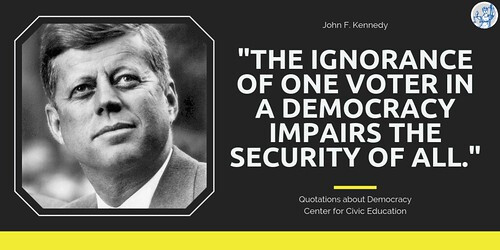
SKYLARK'S QUESTION OF THE WEEK
What issues are most pressing for you in the current election?
Please put your answer in the Reply section below. I'd love to hear from you.
SKYLARK'S SONG OF THE WEEK - GET UP, STAND UP by BOB MARLEY
LYRICS
Get up, stand up
Stand up for your right
Get up, stand up
Stand up for your right
Get up, stand up
Stand up for your right
Get up, stand up
Don't give up the fight
Preacher man don't tell me
Heaven is under the earth
I know you don't know
What life is really worth
He said all that glitters is gold
Half that story ain't never been told
So now you see the light, hey
You stand up for your right
Come onGet up, stand up
Stand up for your right
Get up, stand up
Don't give up the fight
Get up, stand up
Stand up for your right
Get up, stand up
Don't give up the fight
Most people think
Great God will come from the sky
Take away everything
And make everybody feel high
But if you know what life is worth
You would look for yours on earth
And now a you see the light
You stand up for your right
Jah!Get up, stand up (Jah, Jah)
Stand up for your right (oh-hoo)
Get up, stand up (get up, stand up)
Don't give up the fight (life is your right)
Get up, stand up (so we can't give up the fight)
Stand up for your rights (Lord, Lord)
Get up, stand up (keep on struggling on)
Don't give up the fight (yeah)
We're sick and tired of your ism-schism game
Dy'n' and go to Heaven in-a Jesus' name, Lord
We know when we understand
Almighty God is a living man
You can fool some people sometimes
But you can't fool all the people all the time
So now we see the light (watch you gon' do?)
We gonna stand up for our rights (yeah, yeah)
So you'd better
Get up, stand up (in the morning) give it up
Stand up for your right (stand up right now)
Get up, stand up
Don't give up the fight (don't give it up, don't give it up)
Get up, stand up (get up, stand up)
Stand up for your rights (get up, stand up)
Get up, stand up
Don't give up the fight (get up, stand up)
Get up, stand up
Stand up for your right
Get up, stand up
Don't give up the fight
Get up, stand up
ABOUT SKYLARK LIVE AND HOW TO FOLLOW ME
My brand, Skylark Live, consists of a weekly newsletter, Skylark Live Town News, a monthly vlog, 60 and Beyond with Skylark, and monthly in-person chats called The Skylark Sessions. They are all designed to inspire and motivate women to thrive in older age through knowledge and self-awareness at 60 and beyond. Andiamo! Let's go!
Skylark Live Town News - My weekly newsletter features articles about human interest, nature, general observations, inspiration, motivation, music, places I've been to, and ideas I want to explore. I represent Bay Shore and towns beyond. There is also a calendar of events. And, I throw in Italian words because I love the language and all things Italian. Bella Italia! As a paying subscriber, you will receive my newsletter each Wednesday morning in your email. That gives you a head's up. You can also advertise your business or event on my newsletter. Just click the link to subscribe: https://skylarklive.town.news
The Skylark Sessions (a work in progress): The Skylark Sessions are in-person chats in a round-table format. There is a new topic for each session. I moderate, but this is an open conversation. I will post the date, time, topic, and location on my social media sites as well as on my Patreon account. There is a $5 cash donation per session. You can RSVP at christineskylark@aol.com.
60 and Beyond with Skylark Vlog - This is my first Monday-of-the month vlog that is inspirational and motivational and is a reflection of what I've written about in my newsletters throughout the month and what we've talked about in my Skylark Sessions. My vlog is recorded and posted on my YouTube Channel, as well as on my Patreon account and my social media sites. Just click my Tube Channel link to subscribe:
Support me on Patreon - This is where you can support my brand for $5 a month. This enables me to carve out time to write my newslettters, create my vlogs, and coordinate my Skylark Sessions. Just click the link: Skylark Live | 60 and Beyond with Skylark | Patreon
Follow me on Social Media - You can find me on Facebook, X, Instagram, and LinkedIn under my brand, Skylark Live.
Thank you for your love and support. Apprezza la giornata. Cherish the day.
